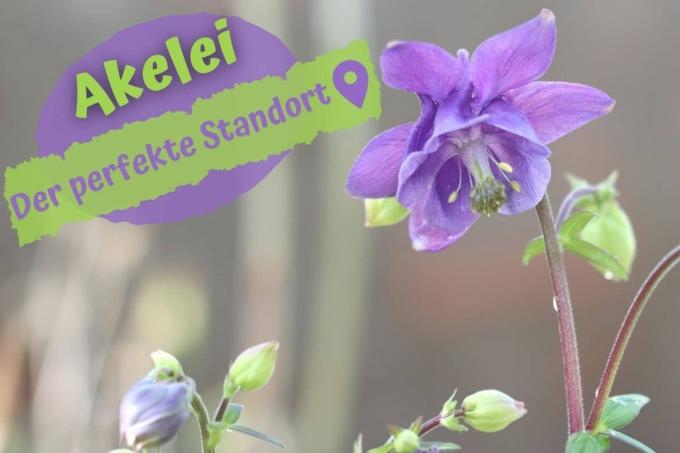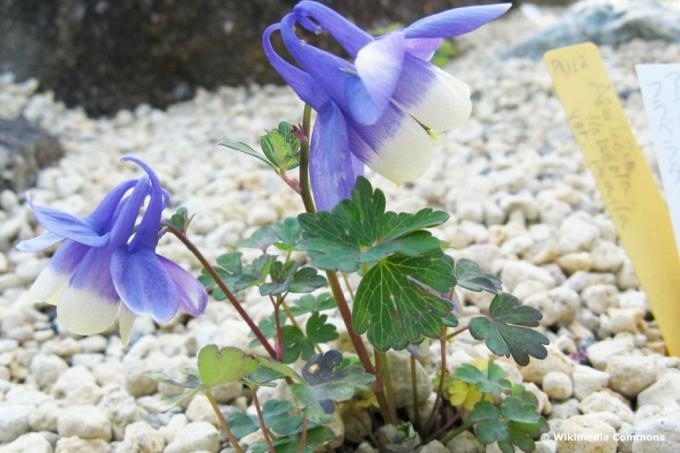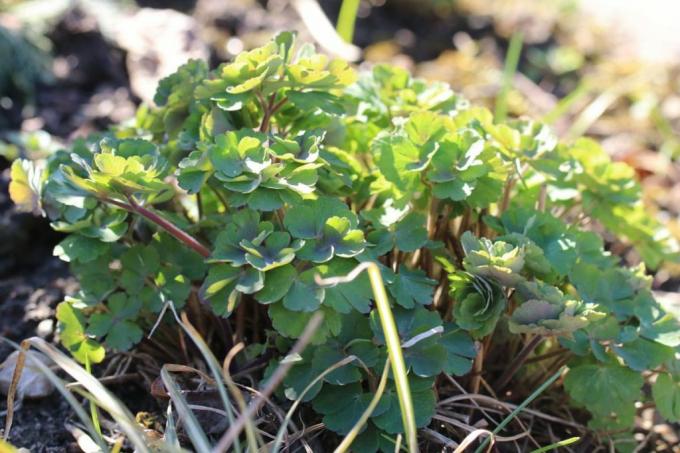
table of contents
- Location requirements can vary
- Partial shade preferred
- Soil condition
- frequently asked Questions
The Columbine (Aquilegia) is a very delicate ornamental plant with unique, brightly colored spur flowers. In order for these to develop, Columbine needs the right location in the garden. We'll tell you where it is.
In a nutshell
- classic perennial for natural or cottage gardens
- Location can vary depending on the species or variety and influence growth behavior
- some like more sun, but most like partial shade
- When choosing a location, the nature of the subsoil is also important
- here the compatibility of lime in the soil varies
Location requirements can vary
This attractive plant is now on the list of critically endangered species. It is all the more important to offer her a suitable place in the home garden where she can unfold and spread out.
- take into account the specific location requirements for the diversity of species
- The amount of sunlight has a significant influence on the height of the plants
- Sun-loving varieties can easily grow up to 90 cm high
- Specimens in darker places about 30 cm
- smaller species such as mountain (A. bertolonii) or dwarf columbine (A. flabellata var. pumila) very well suited for keeping in pots
- very good also for naturally laid out ones Rock gardens

Source: I, KENPEI, Aquilegia flabellata var pumila1, Edited by Plantopedia, CC BY-SA 3.0
Unfortunately, the columbine is not very long-lived and usually dies after four to five years. Since it sows itself, however, it remains for many years, provided that the location and the associated nature of the soil meet the needs of the plants.
Partial shade preferred
In the great outdoors, the so-called elf shoe is at home in light beech and oak mixed forests, on the edge of hedges and meadows, and on dry and semi-dry lawns. They are often found there alongside liverworts (Hepatica nobilis) and the stinking hellebore (Helleborus foetidus).

- preferably in the garden locations in partial shade or
- or wandering shadows
- can also be sunnier depending on the variety
- some hybrids among them prefer sunny locations
- as do many American species
- Place shouldn't get too hot
- foliage close to the ground keeps the root area more shady
- regulates the moisture in the soil
The columbine is one of the weakly competitive plants and cannot hold its own against root competition from other plants. Accordingly, areas under larger trees should be avoided, as well as proximity to rapidly spreading plants.
Tip: If you choose the wrong companion plants, the columbine can very quickly lose its attractiveness. This should not happen with plants such as the evergreen spring rose (Helleborus orientalis), star umbels (Astrantia) or cranesbill (Geranium).
Soil condition
The right condition of the soil is part of the optimal choice of location. Here, too, the requirements can vary from species to species. For example, the Alpine Columbine (A. alpina) calcareous soils, while other species tolerate such soils poorly.

This is how the subsoil in the perfect location for Columbine should be:
- in the best case, loose and permeable
- moderately dry to fresh
- in addition, it is humus, rich in nutrients and bases
- stony or sandy-loamy substrates are ideal
- basic pH value between 8.5 and 10 recommended
The columbine is a so-called gauze soil plant, which means that the sunnier the place, the fresher the soil should be. Specimens in pots or tubs can be placed in nutrient-rich potting soil.
Tip: The best thing to do when buying columbines is to inquire about their special needs in terms of location and soil.
frequently asked Questions
If several different varieties or types of columbines grow in the garden, it is quite possible that undesirable crosses occur. As a result, the characteristics of the next generation do not match those of their parents. However, those who care about varietal purity should either remove all of the seedlings or prune the plants before they produce seeds.
The Columbine is one of the weakly poisonous plants. Toxins such as a glycoside that forms hydrogen cyanide are found in all parts of the plant, with the highest concentration in the seeds. Eating as little as 20 grams of fresh leaves can lead to cramps, shortness of breath and heart problems. As a rule, however, these symptoms subside quickly. In addition, skin irritation and blistering can occur. Children and pets should be kept away as much as possible.
Reasons for a change can be strong competition for roots at the old location, too shady Space, a soil that is prone to waterlogging or too many different varieties on one and the same Location.



